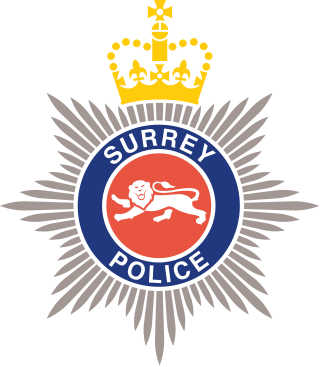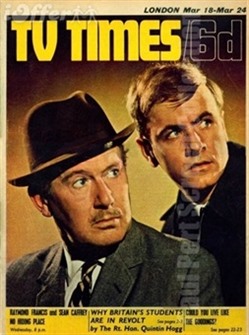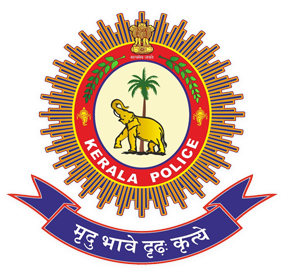Sergeant (Sgt) is a rank in use by the armed forces of many countries. It is also a police rank in some police services. The alternative spelling, serjeant, is used in The Rifles and other units that draw their heritage from the British light infantry. Its origin is the Latin serviens, 'one who serves', through the Old French term serjant.
The Criminal Investigation Department (CID) is the branch of a police force to which most plainclothes detectives belong in the United Kingdom and many Commonwealth nations. A force's CID is distinct from its Special Branch. The name derives from the CID of the Metropolitan Police, formed on 8 April 1878 by C. E. Howard Vincent as a re-formation of its Detective Branch. British colonial police forces all over the world adopted the terminology developed in the UK in the 19th and early 20th centuries, and later the police forces of those countries often retained it after independence. English-language media often use "CID" as a translation to refer to comparable organisations in other countries.
Police ranks are a system of hierarchical relationships in police organisations. The rank system defines authority and responsibility in a police organisation, and affects the culture within the police force. Usually, uniforms denote the bearer's rank by particular insignia affixed to the uniforms.
Chief superintendent is a senior rank in police forces, especially in those organised on the British model.
A division was the usual term for the largest territorial subdivision of most British police forces. In major reforms of police organisation in the 1990s divisions of many forces were restructured and retitled Basic Command Units (BCUs), although as of 2009 some forces continue to refer to them as divisions.
Inspector, also police inspector or inspector of police, is a police rank. The rank or position varies in seniority depending on the organization that uses it.

Hendon Police College is the principal training centre for London's Metropolitan Police.

Surrey Police is the territorial police force responsible for policing the county of Surrey in South East England.
Superintendent (Supt) is a rank in the British police and in most English-speaking Commonwealth nations. In many Commonwealth countries, the full version is superintendent of police (SP). The rank is also used in most British Overseas Territories and in many former British colonies. In some countries, such as Italy, the rank of superintendent is a lower rank.
Sub-divisional inspector was a rank used in the London Metropolitan Police from the 1870s or 1880s until 1949. A sub-divisional inspector ranked above an inspector and below a chief inspector. As the title suggests, he or she commanded a sub-division or held an equivalent administrative position. The equivalent rank in the Criminal Investigation Department was divisional detective inspector or first class detective inspector. In 1949, the rank was absorbed into that of chief inspector, although in 1953 officers who held the position of sub-divisional commander were regraded again to superintendent grade I, and are thus equivalent to modern superintendents.

No Hiding Place is a British television series that was produced at Wembley Studios by Associated-Rediffusion for the ITV network between 16 September 1959 and 22 June 1967.

Detective Sergeant/Detective Inspector Robert "Robbie" Lewis is a fictional character in the Inspector Morse crime novels by Colin Dexter. The "sidekick" to Morse, Lewis is a detective sergeant in the Thames Valley Police, and appears in all 13 Morse novels. In the television adaptation, Inspector Morse, he is played by Kevin Whately. Following the conclusion of the series, Whately reprised the role as the lead character in Lewis, in which the character has been promoted to the rank of inspector.
Detective Chief Superintendent Jim Strange is a fictional character in the television series Inspector Morse, played by James Grout. The character also appears, as a Police Constable and Detective Sergeant, in the prequel series Endeavour, portrayed by Sean Rigby. Although Strange does not appear in every episode of Inspector Morse, he is present in the whole series from beginning to end. He is absent from only a few of the intervening episodes. Strange's first name is never revealed in the Inspector Morse series.

The Bangladesh Police is the national law enforcement agency of Bangladesh, operating under the Ministry of Home Affairs. It plays a crucial role in maintaining peace, and enforcement of law and order within Bangladesh. Though the police are primarily concerned with the maintenance of law and order and security of persons and property of individuals, they also play a big role in the criminal justice system. Bangladesh Police played an important role during the Bangladesh Liberation War.
The United States police-rank model is generally quasi-military in structure. A uniform system of insignia based on that of the US Army and Marine Corps is used to help identify an officer's seniority.
Chief inspector is a rank used in police forces which follow the British model. In countries outside Britain, it is sometimes referred to as chief inspector of police (CIP).
Station sergeant is a police rank senior to sergeant and junior to inspector in some British and Commonwealth police forces. The rank insignia is usually a sergeant's three chevrons surmounted by a crown, or sometimes four chevrons. The Metropolitan Police, which was the first force to introduce the rank, originally used four chevrons, but later changed to a crown over three chevrons, which was identical to the insignia worn by a staff sergeant in the British Army. A police officer holding the rank will be the senior sergeant in a police station, or in some cases the commander of a smaller sub-divisional police establishment.

The Kerala Police is the law enforcement agency for the Indian state of Kerala. Kerala Police has its headquarters in Thiruvananthapuram, the state capital. The motto of the force is "Mridhu Bhave Dhrida Kruthye" which means "Soft in Temperament, Firm in Action" in Sanskrit. It operates under the Department of Home Affairs, Government of Kerala. The force is headed by the State Police Chief, and the incumbent chief is Shaikh Darvesh Sahib, IPS.
The police in Canada's ranks differ according to the different police forces and depend on different laws at the federal, provincial, and municipal levels.





